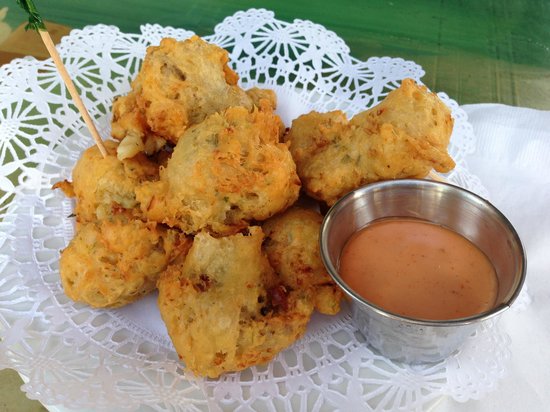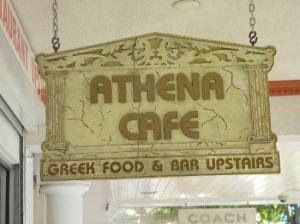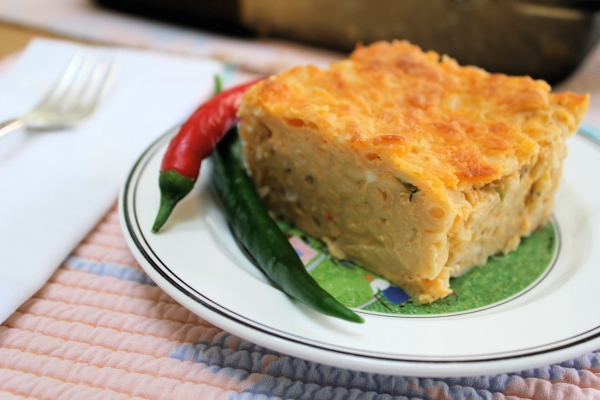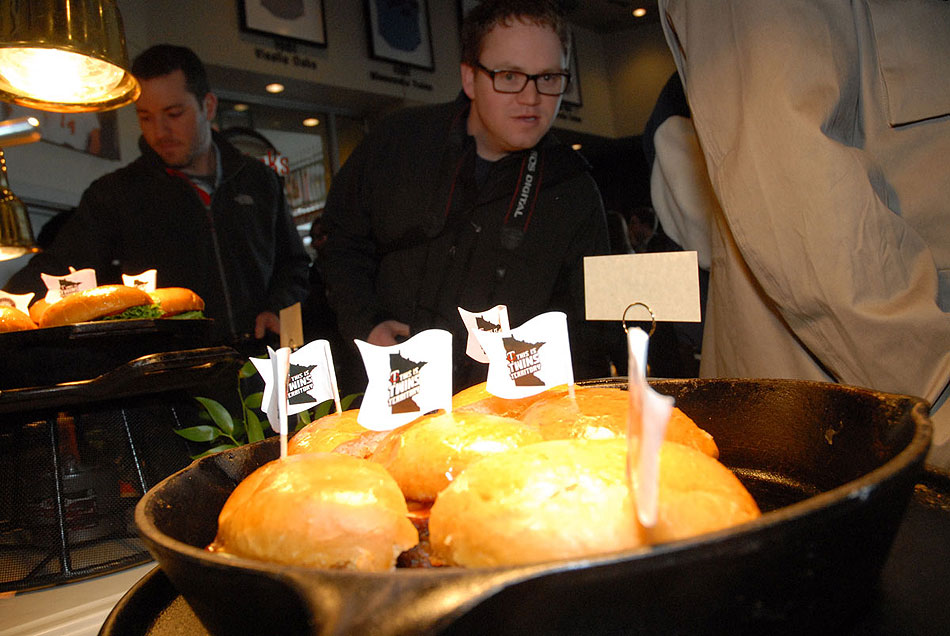
1
The Minnesota Twins and their food service provider, Delaware North Companies, unveiled this season's specials at Target Field today. They'll have some of rookies from previous seasons back, from Walk-A-Tacos to the Fulton beer. (MPR Photo/Tim Nelson)
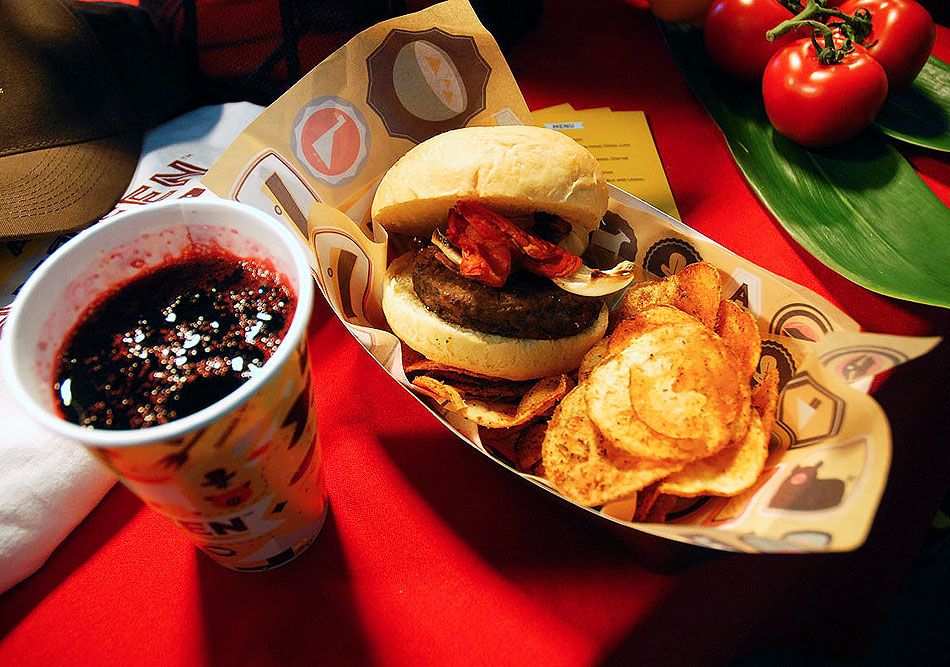
2
Andrew Zimmern's AZ Grill: Cabrito burger with roasted tomato and onion, $13. Hibiscus punch, $4.50. (MPR Photo/Tim Nelson)
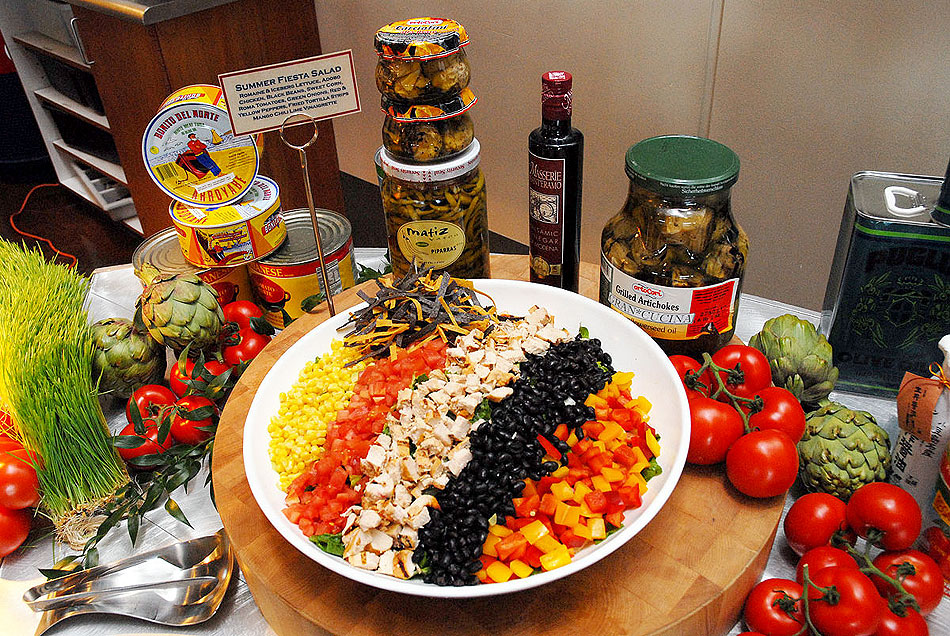
3
Summer Fiesta Salad: Romaine and iceberg lettuce, adobo chicken, black beans, sweet corn, roma tomatoes, green onions, red and yellow peppers, fried tortilla strips and mango chili lime vinaigrette, $9. (MPR Photo/Tim Nelson)
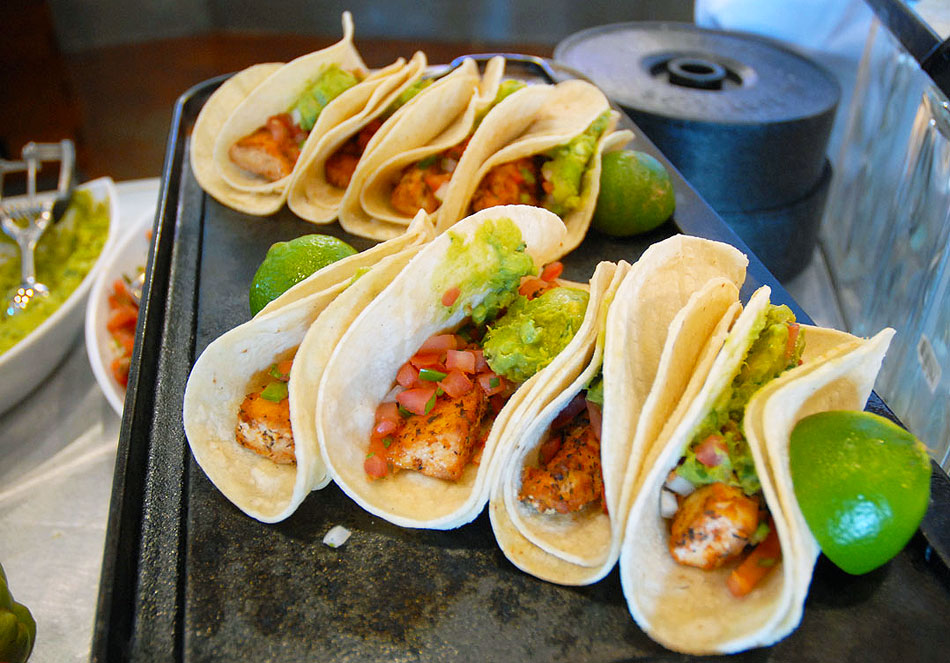
4
Fish tacos: Corn tortillas filled with Mahi-mahi, pico de gallo, guacamole and salsa fresca with corn tortilla chips, $13. (MPR Photo/Tim Nelson)
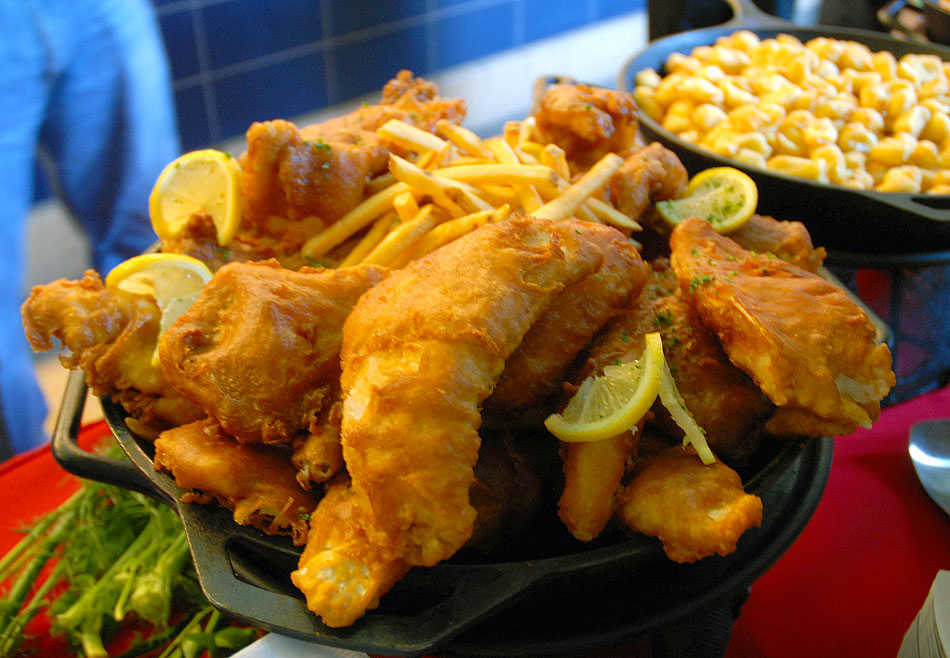
5
Mac's Fish and Chips Fried Walleye: Fresh walleye fillet, battered and fried to order, $11.50. (MPR Photo/Tim Nelson)
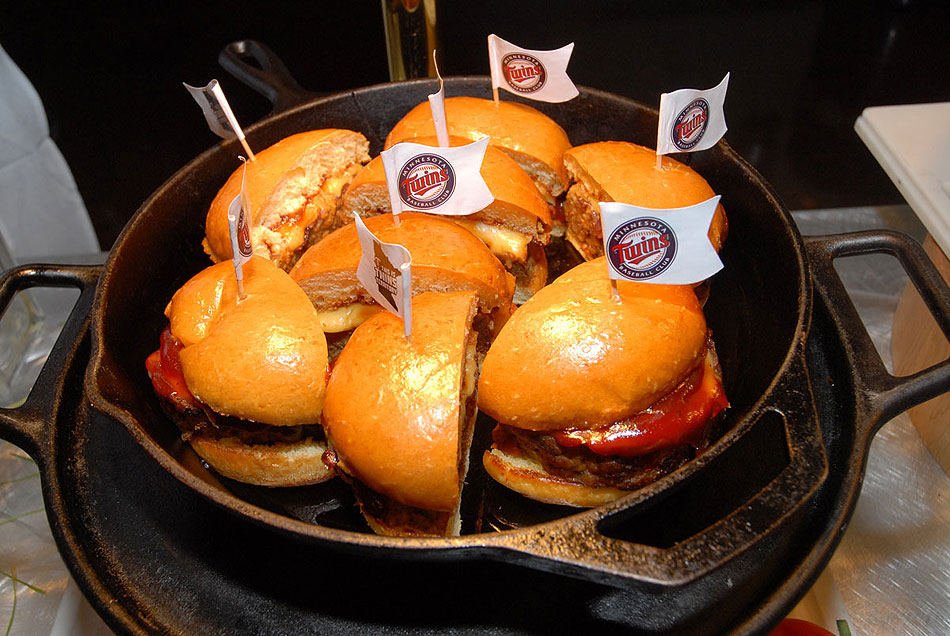
6
Meatloaf sandwich: Slice of meatloaf with fried onions, cheese and hand-made barbeque sauce, $11. (MPR Photo/Tim Nelson)
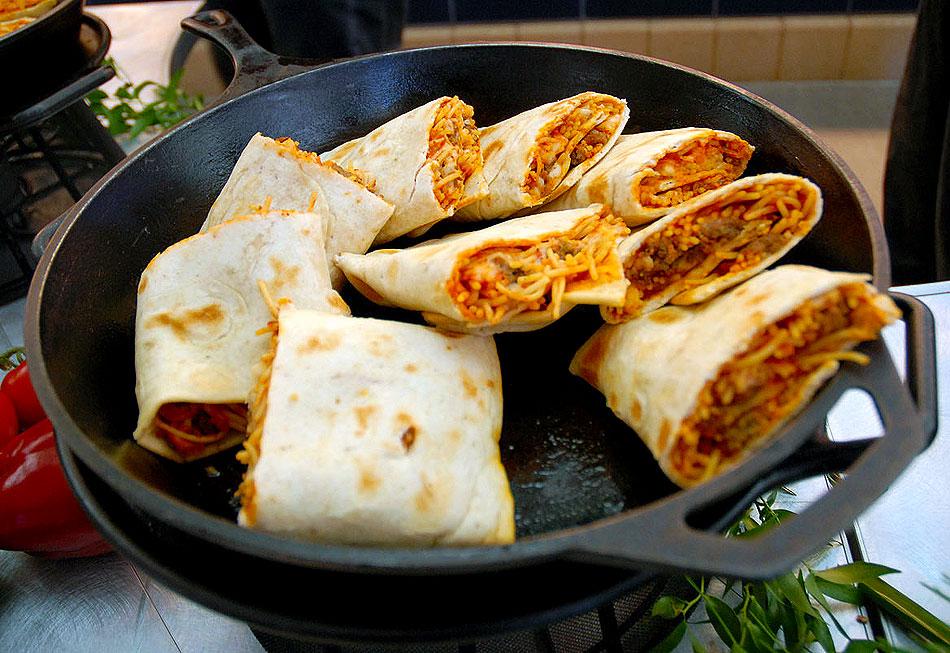
7
Frankie V's Paninos: Baked, wrapped sandwiches, with either buffalo chicken or spaghetti and meatball filling, $10.50 to $12. (MPR Photo/Tim Nelson)
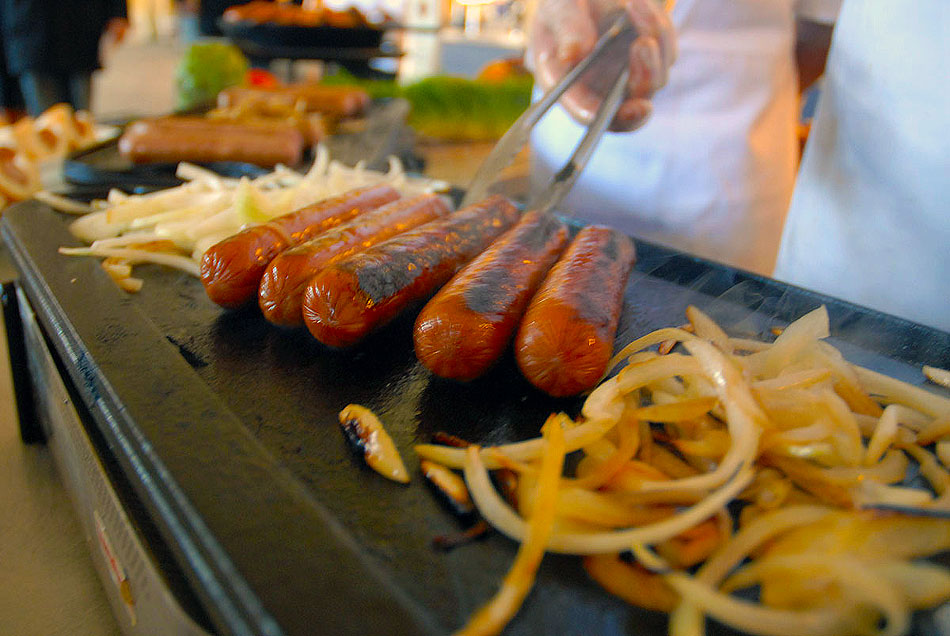
8
Target Field has also replaced Klements sausage products with Sheboygan sausages, like bratwurst, cheddar bratwurst, Italian and Polish sausage in Halsey's Sausage Haus concessions, $4.50. (MPR Photo/Tim Nelson)
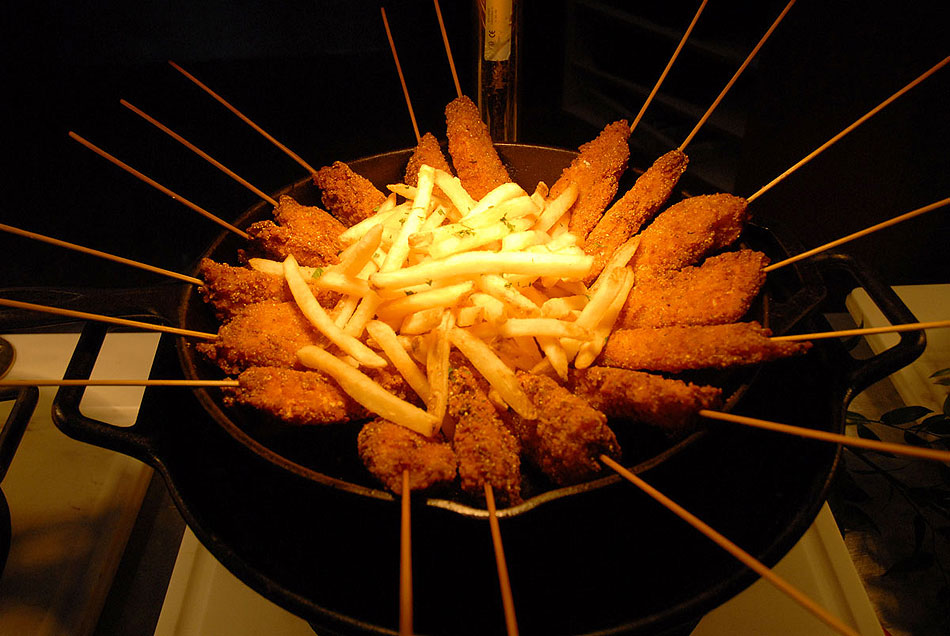
9
Walleye on a spike: Walleye strips, breaded and skewered, bigger than last year, $14. (MPR Photo/Tim Nelson)











